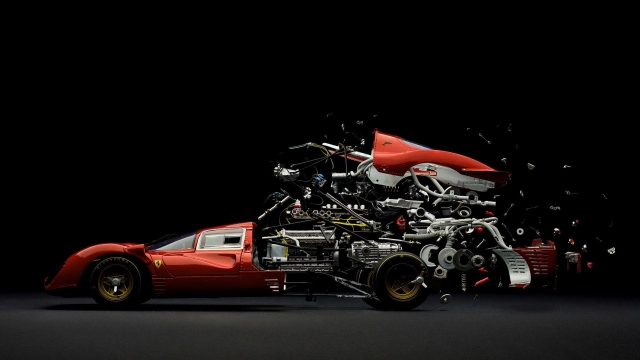
In the realm of photography, there is a captivating branch that holds the power to freeze time and immortalize the human essence – portrait photography. It is an art form that goes beyond simply capturing faces; it delves deep into the very souls of individuals, revealing their stories, emotions, and innermost truths. With every click of the camera shutter, portrait photographers have the unique ability to preserve fleeting moments, leaving a lasting impression that transcends time itself.
Through the lens, these skilled craftsmen and women wield their creativity and technical expertise to compose compelling visual narratives. They meticulously consider lighting, angles, and settings, in an effort to illuminate the unique features and personalities of their subjects. From candid captures of everyday life to meticulously staged studio shots, portrait photography encapsulates the diversity of human experiences and emotions. It has the power to celebrate the joy in a child’s laughter, evoke empathy through the lines etched on an elder’s face, and freeze the beauty of love and connection in a single frame.
To truly excel in the art of portrait photography, one must possess a keen eye for detail, an innate sense of empathy, and the ability to establish a genuine connection with the subjects. It requires both technical skill and an understanding of human psychology, as photographers aim to create images that resonate deeply with both the subjects and the viewers. It is through this delicate dance of trust, collaboration, and creativity that portrait photographers are able to capture the intangible – the essence of a person’s soul, frozen in time and immortalized through the lens.
In this article, we will journey into the captivating world of portrait photography, exploring its history, techniques, and the stories behind some of the most iconic portraits captured throughout time. So, join us as we embark on this visual and emotional adventure, uncovering the art and craft behind capturing souls through the mesmerizing art form of portrait photography.
1. The History of Portrait Photography
In the early days of photography, portrait photography emerged as a way to capture the essence and likeness of individuals. During the 19th century, the daguerreotype process, invented by Louis Daguerre, enabled the production of the first practical form of photography. This groundbreaking technology allowed for the creation of highly detailed and finely crafted portraits.
As the art and craft of portrait photography progressed, new techniques and advancements were introduced. The wet plate collodion process, invented by Frederick Scott Archer in 1851, revolutionized the field by enabling faster exposure times and enhancing the overall quality of images. This technique became widely used for portrait photography, capturing the expressions and emotions of individuals with greater clarity.
Portrait Photographer
With the advent of the 20th century came the introduction of more portable and user-friendly cameras, such as the Brownie camera by Kodak. This innovation made photography more accessible to the masses and allowed for greater creativity in capturing portraits.
In recent years, the digital revolution has further transformed the field of portrait photography. The rise of digital cameras and photo-editing software has opened up endless possibilities for photographers to experiment with various styles and techniques. The advent of social media platforms and online portfolios has also provided a new platform for showcasing and sharing portrait photographs with a wider audience.
The history of portrait photography is a testament to the enduring human fascination with capturing the essence and beauty of individuals. From the early pioneers to modern-day artists, each era has contributed to the evolution of this art form, shaping the way we perceive and appreciate portraits in our society.
2. Techniques and Composition
In the world of portrait photography, mastering the right techniques and composition is crucial to capturing the essence and soul of your subject. From framing to lighting and posing, here are some key elements to consider when creating truly captivating portraits.
Firstly, composition plays a vital role in portrait photography. A well-composed image allows you to highlight the subject’s unique features and personality. One popular composition technique is the rule of thirds, where you divide the frame into three equal parts horizontally and vertically, placing the subject on one of the intersecting lines. This adds balance and visual interest to your photograph, leading to more engaging portraits.
Next, lighting is an essential aspect of capturing the true essence of your subject. Whether it’s natural or artificial light, understanding how to manipulate and control lighting can make a significant difference in your portrait. Soft, diffused lighting often works best as it creates gentle, flattering shadows and minimizes harsh highlights. Experiment with different lighting setups and techniques to find what works best for each individual you photograph.
Lastly, posing plays a pivotal role in conveying emotions and storytelling in portrait photography. A well-directed pose can evoke a sense of intimacy, confidence, or vulnerability and add depth to the narrative of the image. Communication and connection with your subject are key during this process. Make them feel comfortable and guide them through various poses and expressions to capture their genuine emotions, resulting in impactful portraits.
Mastering the techniques and composition in portrait photography allows you to create images that not only capture the physical appearance but also reveal the unique essence of the individuals being photographed. By paying attention to composition, lighting, and posing, you can truly capture the souls of your subjects, creating timeless and memorable portraits.
3. Capturing Emotions and Personalities
Photography has a unique ability to capture and convey the emotions and personalities of the subjects being photographed. Through the lens of the camera, skilled portrait photographers have the power to freeze a moment in time and immortalize the true essence of an individual.
One of the key elements in capturing emotions and personalities in portrait photography is establishing a connection with the subject. By creating a comfortable and relaxed environment, photographers can help their subjects feel at ease, which allows their true emotions to shine through. This connection can be built through conversation, actively listening to their stories, and understanding their background and experiences.
In addition to building a connection, the use of lighting, composition, and perspective also plays a crucial role in capturing emotions and personalities. The interplay between light and shadow can evoke different moods and enhance the overall impact of a portrait. Thoughtful composition and the careful placement of the subject within the frame can highlight specific traits or convey a particular narrative.
Lastly, a skilled portrait photographer understands the importance of timing. Moments that are genuine and spontaneous often result in the most captivating photographs. By capturing a candid smile, a glimmer in the eye, or a tender gesture, photographers can freeze these fleeting expressions and preserve the unique personality of their subjects for years to come.
Capturing the emotions and personalities of individuals through portrait photography is both an art and a craft. It requires not only technical skills such as lighting and composition but also a genuine connection with the subject. Through this synergy, portraits have the power to evoke empathy, stir emotions, and tell powerful stories without uttering a single word.


